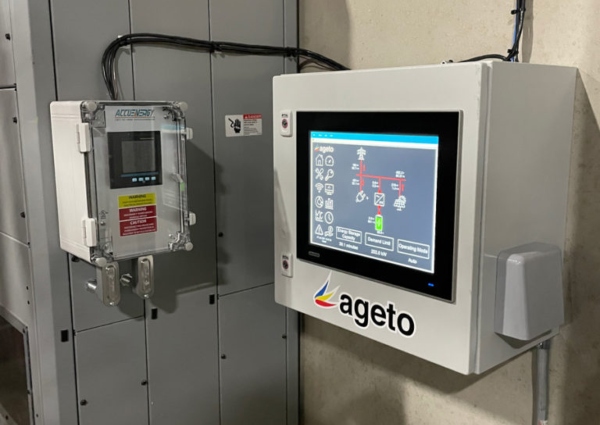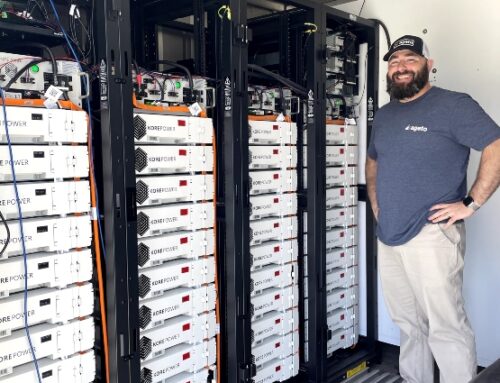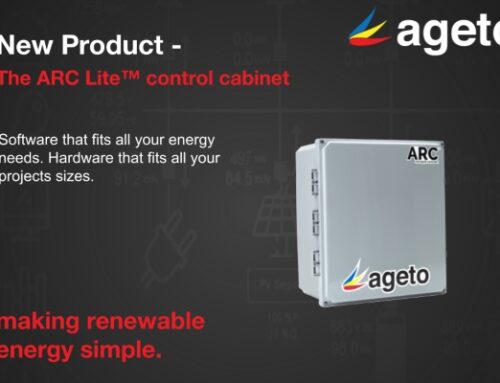California’s Self-Generation Incentive Program or SGIP is a long-running program pioneered by the California Public Utilities Commission (CPUC). SGIP incentivizes new and existing energy storage projects in the state with the goal of furthering energy equity, resilience, and the reduction of greenhouse gas emissions. These SGIP incentives can offer significant paybacks on microgrid energy storage projects in the form of rebates that can cover project installation costs and greatly improve the economic viability of adding battery storage. Add an intelligent site-level microgrid controller to the system, and meeting SGIP system performance requirements can be a breeze and more value can be gained from the battery energy storage.
Understanding what SGIP means for your energy storage project can be confusing. This article will review some of the most important takeaways, including:
- SGIP origin, goals and funding
- A brief overview of the eligibility requirements
- The value of battery storage
- How a microgrid controller can monitor your microgrid to meet and report system performance requirements
- How a microgrid controller can optimize your microgrid to unlock the maximum value from your batteries
Program rules and requirements in their entirety can be found in the 2021 SGIP Handbook, a rather lengthy document produced by the CPUC that acts as the authority for SGIP.
Make it to the end of this post and still have questions? Reach out! We’d be happy to answer any SGIP, microgrid, or microgrid controller questions. Shoot us an email at [email protected].
Why SGIP?
Most are familiar with the power distribution issues plaguing the California grid. The state’s large demand for power has caused rolling blackouts in the face of extreme heat waves and global warming. California, in a forward-looking move, has turned toward renewables (largely photovoltaic solar) and battery storage as a solution.
The SGIP program was founded in 2001 and has changed significantly over time to address the evolving power distribution problems in the state. Originally, it was conceived to address peak-load reduction needs. In 2018, Senate Bill 700 (SB 700) was passed providing the SGIP program with $800 million in funding to extend the life of the program by 5 years. In early 2020, the CPUC authorized $675 million of this budget to be directed toward energy storage projects in the state. This is in addition to the just over one billion dollars in carry-over funds from the previous round.
In short, California is putting money behind the SGIP incentive program to drive the energy storage market with the hope it will benefit both the customers and the state. The idea is that more energy storage will help stabilize the grid, among a myriad of other benefits not limited to the reduction of greenhouse gasses and mitigation of climate change. Most qualifying behind-the-meter (customer-facing side of the utility meter) energy storage projects stand to benefit from SGIP incentives. The paybacks can greatly increase the economic viability of a microgrid energy storage project and can cover a significant portion or even the entirety of the energy storage project installation. SGIP can improve the ROI of a microgrid energy storage project and can mean power resilience, an extremely valuable or even lifesaving aspect of a system. Not only that, but with the right system design and correct microgrid controller in the driver’s seat, the battery system can provide additional savings on the power bill for the life of the system.
Why battery storage?
Power is a resource that is often forgotten until it is no longer available. Going without power can be costly or disruptive to a home or business and in some cases, dangerous or even life-threatening. If a site has a resilient battery storage system installed, in instances the grid goes down, the batteries can take over and meet the loads. The power resilience brought by a battery energy storage system alone can be economically valuable. This is easily observed when business operations don’t have to be paused or product is not lost.
Resilience can be extremely valuable to the consumer and the utility, however, this is far from the only value a battery energy storage system can unlock. With an intelligent control system, such as the Ageto ARC microgrid controller, monitoring and controlling the entire system, energy storage can provide significant savings daily through demand charge management, load shifting, peak shaving, and time-of-use energy arbitrage.
ARC is able to intelligently coordinate the batteries with the facility load, utility, and any other resources behind-the-meter (such as solar or a backup generator) to unlock potential savings. Ageto is able to utilize the battery system in whatever way best serves the customer’s individual use case. This can include:
- Reserving a portion of the battery’s energy for backup power in case of an outage while utilizing the other portion of the battery’s energy to generate additional revenue streams such as demand charge electricity savings.
- Utilizing all of the battery’s available energy to optimize around the tariff with the ability to instantly change to “resiliency mode” with any forewarning of an outage. With a simple click, resilience mode is activated which prioritizes charging the batteries as quickly as possible whether that be through solar or the utility
- Using a certain portion of battery energy to provide Time-of-Use (TOU) savings while reserving a another portion to prioritize Demand Charge Management , often offering more savings
With an intelligent controller optimizing the system, additional value streams can be unlocked that can offer paybacks for the life of the system. Combined with the incentives available from SGIP, a battery energy storage system or microgrid energy storage project can quickly become an economically viable or profitable project.
Who qualifies for SGIP?
Any retail electric or gas customer served by a California IOU (Investor Owned Utility) (PG&E, SCE, SoCalGas, or SDG&E) is eligible to receive SGIP incentives. They’re are a few levels of rebate eligibility starting with the general market and increasing in value from there.
Equity Resiliency
Just over three-quarters of the total SGIP energy storage budget has been allocated toward the SGIP Equity Resiliency rebate. Projects falling into this tier stand to receive the largest incentives, the value of which are intended to cover a large portion, if not all of energy storage project installation costs. This includes low-income (LIC) and disadvantaged (DAC) communities in high-fire risk districts (HFTD) or that have been affected by two or more Public Safety Power Shutoffs (PSPS) events and are considered high resilience needs such as emergency operation centers or those who rely on electric pumps for water.
Equity
The second level is the SGIP Equity rebate. This level includes government agencies, educational institutions, non-profits, and small businesses on the non-residential level. On the residential level, the equity rebate includes multi-family low income housing, single family low income households or any project in California Indian Country. The depth of this incentive is intended to cover around 85% of the installation cost.
For details and tools to learn if you qualify as any of the above, refer to the SGIP handbook.
General Market
Lastly is the SGIP general market rebate which includes the remaining market from small scale residential to large scale commercial energy storage projects. The amount to be received from these rebates are step based which began at 50% coverage of installation, but has decreased with time as funds are consumed and the program proceeds to its next steps. Because of this, it is advantageous for customers in this tier to apply earlier rather than later to get the most value from their rebates. Certain adders are also available for those who can demonstrate their storage is able to provide resilient power or for projects who use equipment manufactured in California.
Once the application has been submitted and approved you are now part of the program, but the process does not end there. Actually, qualifying for SGIP does not end for the life of the program. Not only are there qualifications a customer has to meet to be eligible, there are also system requirements that must be met and reported monthly.
System Reporting
Meeting these system requirements is extremely important and can be highly complicated. There are many requirements to be met in the general market including minimum battery cycling requirements, greenhouse gas emission reductions and roundtrip efficiency of a single battery cycle to name a few. For example, commercial customers receive a performance based incentive (PBI) based on the target of 5 kg/kWh of GHG reduced by the system. The rebate available decreases if the system does not at least meet this target.
The system performance requirements can be a lot to make sense of. Luckily, Ageto’s business is in understanding and optimizing the performance of an energy storage microgrid system. All applicants are required to provide a preliminary monitoring plan which must include the intended approach for collecting, storing and transferring the necessary performance data and work with an approved performance provider for at least five years. Ageto is a conditionally-approved Performance Data Provider meaning we are able to utilize the ARC microgrid controller to deliver monthly reports directly to the SGIP program administrators on a monthly basis without the microgrid owner or operator ever having to give it a second thought.
Summary
The potential value of energy storage is large and only increasing. SGIP is giving eligible utility customers opportunities to install these systems where it might not have been otherwise economically possible. A microgrid controller can optimize the system to bring further revenue, increase overall penetration of renewable energy and generally make the whole processes easier.
Curious what an intelligent microgrid controller can do for your microgrid or energy storage system? Get in touch!




